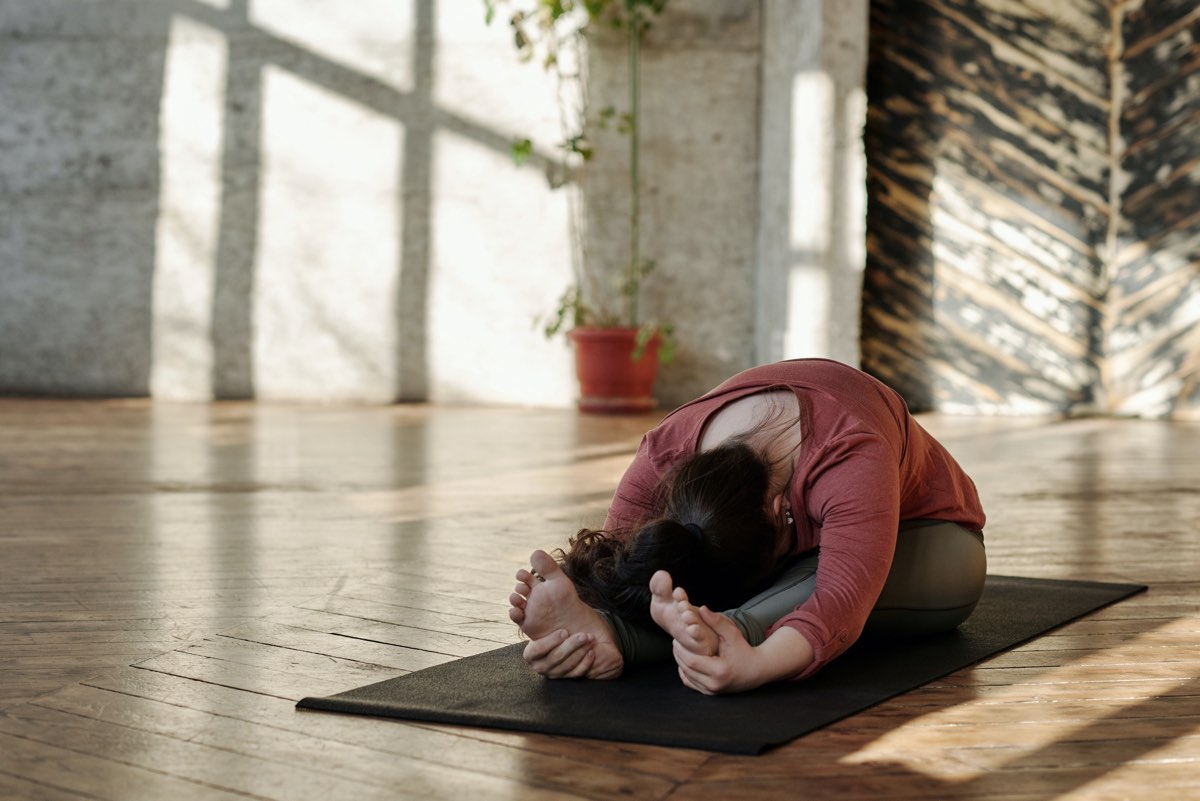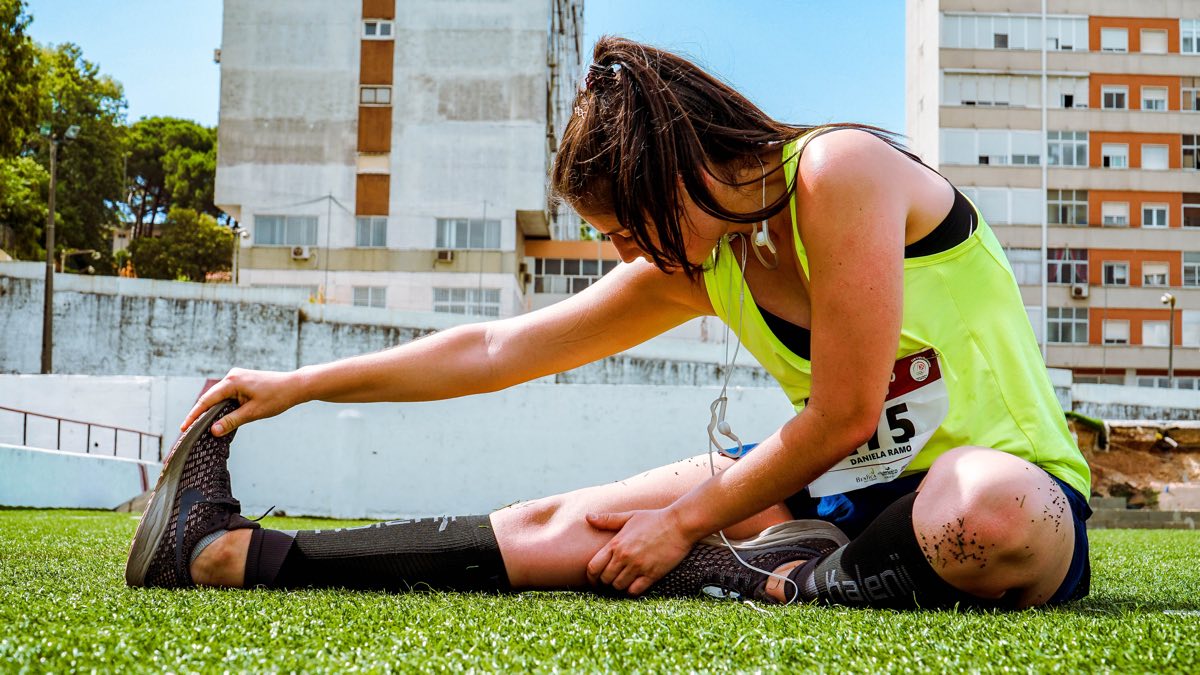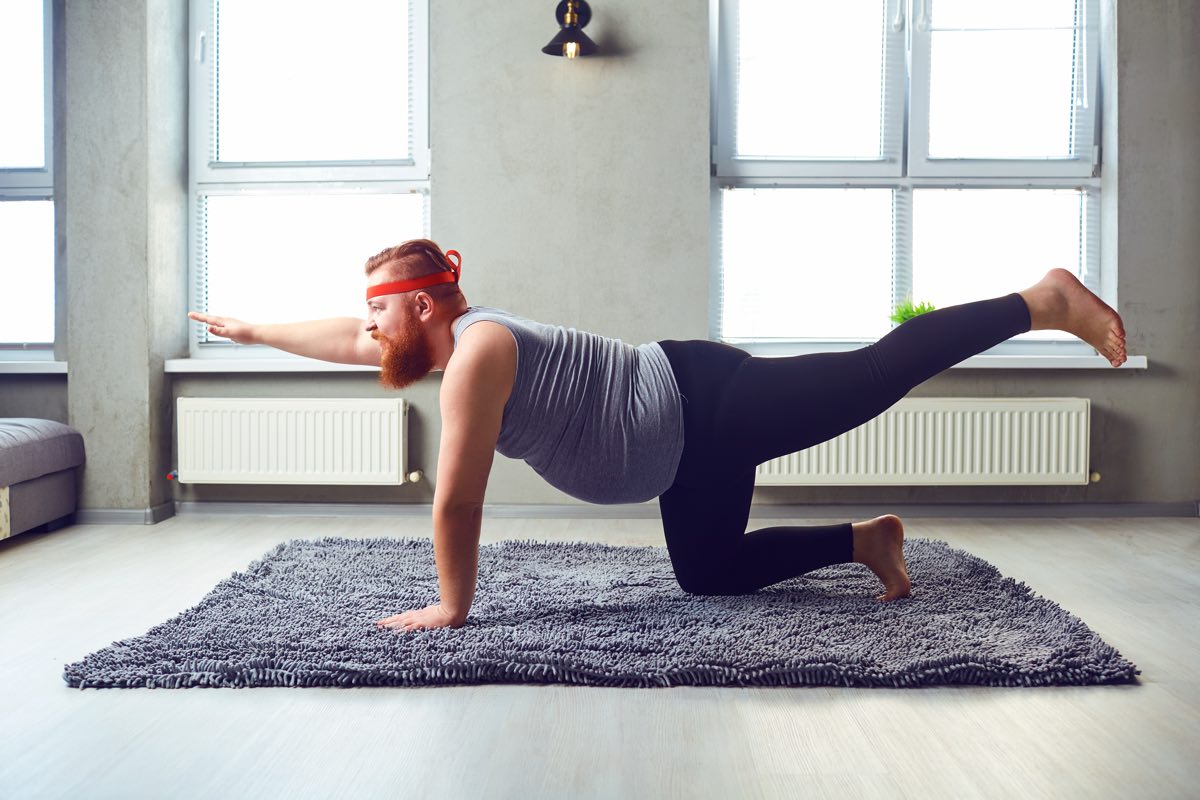Recently, I invited a friend to join me at a yoga class, and their response was: “My hamstrings are tighter than my jeans after Thanksgiving. My body just doesn’t bend! What would I do there?”
To them, the thought of doing yoga was absolutely alien, which got me thinking about this widespread myth that you need to be flexible to do yoga. On a lot of social media, yoga has become almost synonymous with a young, athletic girl doing acrobatics on the edge of a cliff or something...
But is yoga really a no-go for anyone born without the rubber-band gene?
The answer is unequivocal: You do not need to be flexible to do yoga! However, I’m sure that you’ve heard this many times before, and yet, since you’re reading this, you probably still can’t shake off the feeling that yoga will not welcome your stiff ligaments with open arms.
Allow me the opportunity to change your mind. I’m about to make the case that yoga may be even better for people who topple over trying to touch their toes.

Are We Born Flexible Or Do We Become Flexible?
Both. Flexibility is about how much our joints and muscles can move. Some people have more elastic muscles, different joint structures, and connective tissue composition that allow them to move at a wider range of motion. But things like daily habits, exercise, and even injuries can also affect the connective tissue in the joints and muscle tension (stiffness), which improves or impairs flexibility. So – we can certainly become flexible even if we’re “born” stiff.
If You’re Less Naturally Flexible…
Unfortunately, those of us who don’t possess the elastic properties of gummy bears think these bendy people are who yoga beckons to.
That’s not true for three reasons. First, scientific research as well as anecdotal evidence consistently show that flexibility is not a fixed trait but a dynamic quality that can change throughout life. Whether it’s a senior citizen who regains mobility through regular yoga practice or an athlete who increases their range of motion for better performance, we see proof every day that flexibility is malleable. Second, it sounds as if we can’t do anything about our flexibility, which is not only untrue but also demoralizing. And third, and maybe most important, it reduces the holistic practice of yoga to only stretching. An authentic yoga class is so much more than how deep you can bend, incorporating physical health, mental well-being, and personal growth through different techniques and practices.
If You’re Too Naturally Flexible…
But let’s get back to flexibility. The other extreme — the belief that anyone can become a Cirque Du Soleil contortionist — is equally problematic. Genetics are a big piece of our physiological puzzle, and they can make it harder or even impossible for us to reach certain levels of flexibility.
For instance, most of us mortals will never be able to attain the near-superhuman abilities of yogis such as Kino MacGregor or Dylan Werner. Kino’s Gandha Bherundasana (Formidable Face pose) is a prime example of how hyper flexibility is sometimes – somewhat unfairly – represented as the poster child of yoga. But this is the exception, not the norm in yoga classes. Most yoga teachers and students alike are people who embrace imperfections and are set on a mission to learn and grow together, one pose and one inhale at a time.
The Wiggle Room
Flexibility is not only a genetic predisposition – it’s also a skill we can work on and improve. The best way to think about it is as a track going from zero to 100. Our starting point on this track is genetically predetermined — some people are naturally more flexible than others, so perhaps they start at 40. If you can barely touch your knees leaning down, you may be starting at zero. Even our hypothetical finish line (the highest flexibility limit we can attain) is influenced by genetics and physiological differences. What’s more, how fast we move on the track is a combination of genetics and dedication. For some people, it will be hard, while for others, it will be relatively easy to become more flexible quickly.
However, the ability to move forward, to make progress along the track, and to become more flexible is fully in our control.
Yoga is a tool that drives this progress. It’s the strategy that will get you to the finish line and even help you push the boundaries of your own body — if that’s something you aspire to do. It can also be your gentle friend that helps you improve and maintain mobility and range of motion as you navigate the hurdles of our modern lifestyle.
The journey to flexibility is highly subjective and will feel different to everybody.

Starting Yoga Without Flexibility
Okay, so yoga improves flexibility, but can you start doing yoga if you feel like you’re at point zero on the track?
Yes, because yoga is for everybody and every body.
Yoga as a practice offers a holistic experience that transcends our physical limitations and aesthetics in movement. It doesn’t matter if we fall, shake, sweat, or struggle on the mat as long as we’re trying to be present in the moment and give our best. Yoga is about making you feel good, not just about making you look good. This is why it incorporates breathing techniques, meditations, and mindfulness practices that promote kindness and relaxation.
Speaking of kindness and good vibes, you shouldn’t worry about how advanced everyone will be at your first yoga class. In yoga, more than any other discipline, it’s highly frowned upon to compare ourselves to others, judge someone else’s individual journey, and show off in terms of physical abilities. The real masters in yoga aren't showing off; they’re humble, dedicated, and adaptable. Forget social media – yoga in the real world is different.
How Yoga Benefits Everybody
I said that I would make the case that yoga may actually benefit less flexible students more. Based on everything that we covered so far, can you guess why that might be?
People with hypermobility, a condition where some or all joints have an unusually wide range of motion, can move their limbs into positions that may be impossible for others. This means that they can do advanced yoga poses with ease — or so it would seem.
The condition can make hypermobile people prone to injuries because, in some cases, it makes the ligaments and joints loose and stretchy. Applying too much pressure on stretchy and loose joints is dangerous and can lead to dislocations. This usually happens when excited and impatient hypermobile students rush to try advanced yoga poses before their body is strong enough to support them.
Flexibility, Balance, Strength
Yoga poses incorporate three components: flexibility, balance, and strength. For instance, what’s considered to be the “hardest yoga pose” or asana by many, Taraksvasana (Handstand Scorpion Pose), is a pinnacle of mastery over all three components.
In that sense, new students who patiently and gradually develop all three skills will reap the most benefits from yoga as a physical practice. Those who safely practice advanced poses are practitioners with years and years of experience — and their beginnings were no different than any of ours, we who tried recreating a yoga pose from a magazine cover and failed miserably.

So, Do You Have To Be Flexible To Do Yoga?
Absolutely not. And now you know why. Saying that you have to be flexible to do yoga is like saying you have to be Usain Bolt to go for a run.
Yoga is a tool that drives progress when it comes to flexibility, which is a highly individual journey that everyone should take at their own pace. Being hyperflexible is not always an advantage. Only through patience and sweating on the mat consistently will you transform your body and improve flexibility.
Finding out what your body is truly capable of begins the moment you step outside your comfort zone. So join a yoga class and witness your body becoming more flexible!



Comments
Existing Comments